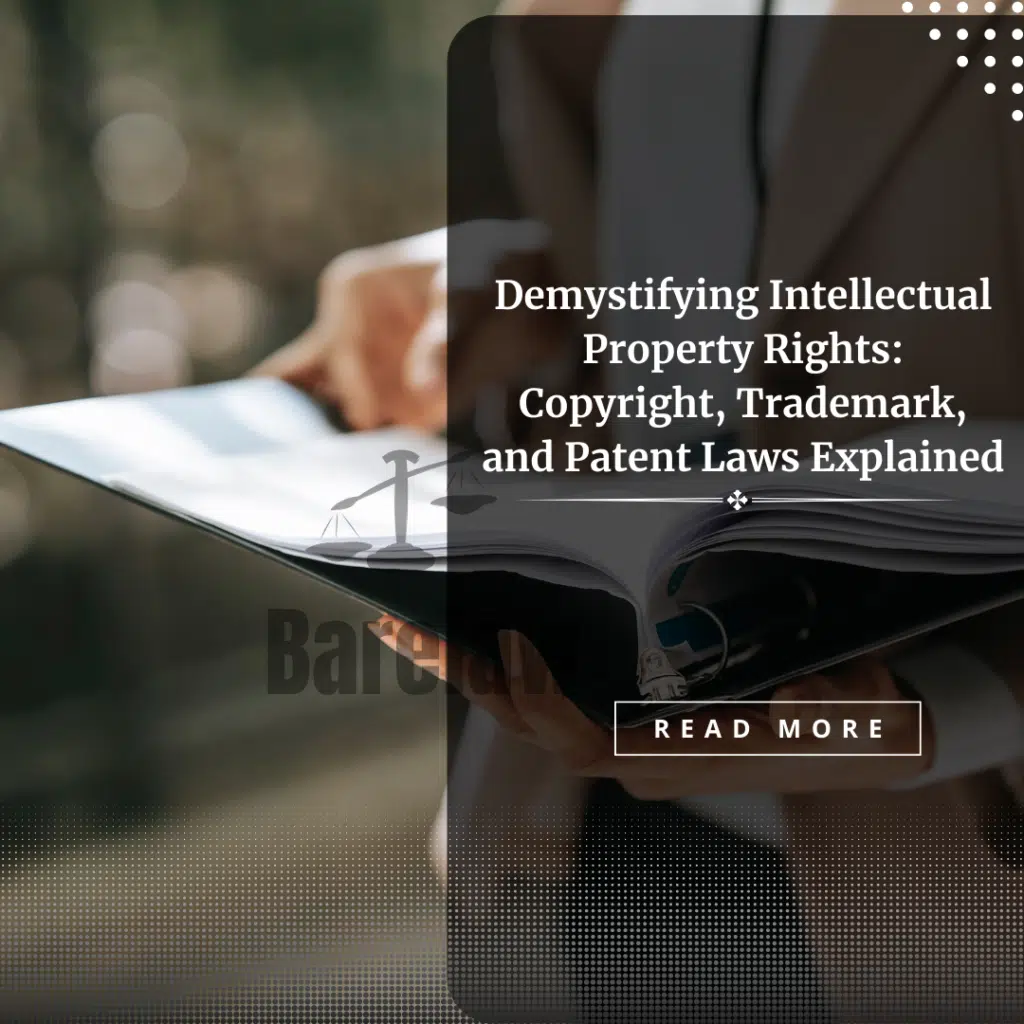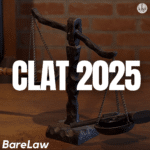
Table of Contents
Demystifying Intellectual Property Rights: Copyright, Trademark, and Patent Laws Explained
Demystifying Intellectual Property Rights: Copyright, Trademark, and Patent Laws Explained
Introduction-
Intellectual property (IP) rights serve as a defense mechanism for creative and innovative works by providing several legal frameworks such as copyright, trademark, and patent laws. It is important for creators, inventors, and the general public to apprehend these concepts. This article aims to simplify the complexity surrounding intellectual property rights by detailing out what they are all about including their main features and differences between copyrights trademarks as well patents laws. Such enlightenment will help us realize how crucial it is to protect intellectual properties which in turn foster creativity, invention as well economic growth.
I. Copyright Law–
Mostly dealing with safeguarding original works of authorship like literature, arts music or drama etc., this legislation allows exclusive rights for authors over their creations so that they control its use reproduction distribution among others. For an original work copyright arises automatically upon its creation giving legal redress against any unauthorized copying or using of such material but additional benefits can be obtained through registration with relevant authorities. Duration usually lasts until death plus certain number of years depending on different countries’ jurisdictions.
Copyright law covers various aspects one being fair use which allows limited utilization of copyrighted materials for purposes such as criticism; commentaries educational and research activities among others while public domain applies where copyright has expired or never existed therefore making those particular pieces free from any restriction whatsoever.
II. Trademark Law-
This type protects logos names phrases or symbols that identify goods services from particular sources thereby distinguishing them in trade mark etting registered enables establishment brand reputation prevention other people using similar marks likely cause confusion amongst consumers however some inherent protection may still arise just by mere usage within commerce.
Trademark laws prevents consumer confusion destroys company’s image preserves customer loyalty building trust ensuring products/services can easily be recognized differentiated even without looking at manufacturer’s name thus helping firms build strong brands capable competing both locally internationally; typically renewable forever provided continuous use accordance applicable rules regulations.
III. Patent Law-
It provides exclusive right inventors over their inventions while safeguarding them against unauthorized exploitation by others eligible include new processes machines compositions matter useful non-obvious improvements to existing ones such protection may be granted for limited period usually twenty years starting from filing date but not always.
Patents must be disclosed publicly this is done through detailed description which serves two purposes – protecting rights inventor sharing technological knowledge with society as whole invention temporary monopoly gives more time recoup money spent during research development stage also encourages people come up something different build upon what already exists thus advancing humanity’s understanding creativity in general.
Difference between copyright, trademark, and patent laws-
Copyright, trademark, and patent laws are all types of intellectual property rights that protect different types of intangible assets. While these laws share some similarities, they differ in their scope and purpose. Here are the main differences between copyright, trademark, and patent laws:
Copyright:
- Defends first creations of the author like books, music, films and software codes.
- Offers only owner the right to duplicate, disseminate, perform or show the work publicly.
- The idea cannot be protected by law; it only protects its expression.
- Protection under copyright ends 70 years after the author’s death.
Trademark:
- Serves as security for logos, slogans and other marks distinguishing one manufacturer’s goods from those produced by others.
- Allows proprietor to enjoy exclusive use of mark in relation to his/her products or services alone
- Goodwill attached to it should be protected at all costs according to trademark laws.
- Protection lasts forever while still being used in business activities.
Patent:
- Covers new inventions, processes or scientific discoveries which are not yet in existence anywhere else before their creation
- Gives holder power over stopping anyone else from making them available without consent through manufacturing , using , selling or importing said product .
- Encourages sharing among people with different ideas so that there can be more innovation around us through patenting process
- Rights end after 20 years since filing date except if extended by an act of congress.
To sum it up, the copyright law protects original works of authorship; trademark law defends logos and other marks that show where goods or services come from while patent laws protect new inventions, processes or scientific discoveries. The different types of intellectual property laws offer various protections for intangible assets. Not knowing these legislations can lead to loss in profits resulting from thefts of ideas or designs.
Examples of intellectual property infringement-
- Intellectual Property Infringement is when someone uses another person’s intellectual property without permission.In this section we will give you some examples on how it can be done:
- Putting your logo on defendant’s product to boost sales
– Copying their writing or artwork and passing it off as their own.
– Intellectual Property infringements on social media where fraudulent profiles use trademarks or copyrighted material to represent a brand.
– Importation of infringing products.
– Trademark-infringing listings.
– Design-infringing products.
– Piracy
– Copyright infringements
– Trademark squatting
– Using another’s words, images, or logo without the property owner’s permission.
-Making, using, selling, offering for sale something that contains every element of your patented claims.
-Using copyrighted photos, text or other media from an authentic brand to sell a counterfeit product.
-Products which exactly copy the functionality and mechanism of products protected by utility patents.
In order to avoid IP infringement one must understand the different types of intellectual property laws available today that cater for different kinds intangible assets also keep track with competitors so as detect any infringe activities early enough should they occur. If one suspects violation against his/her copyright rights , seeking legal advice should be immediate & necessary action taken towards protection.
Common misconceptions about intellectual property rights-
- Below are common misconceptions about intellectual property rights:
- – Anything created by employees or contractors is owned by the business
– Intellectual property rights are only for big companies
– Protection applies to an idea.
– Copyright, trademark, and patent laws are the same thing
– Intellectual property rights are only for creative works.
– You can use any copyrighted material as long as you give credit to the author
– Intellectual property rights are only for the United States.
– Intellectual property rights last forever.
– You can’t use any part of a copyrighted work without permission.
– Intellectual property rights are too expensive to obtain.
Conclusion-
Knowing copyright, trademark and patent law is crucial for creators, innovators and consumers alike. Copyright protects original works of authorship; trademarks safeguard distinctive brands while patents safeguard new inventions. These legal frameworks provide essential protections that foster creativity innovation and economic growth. Respecting and upholding intellectual property rights will create a vibrant ecosystem where creators get rewarded for their contribution businesses differentiate themselves and consumers make informed choices in the market place.



